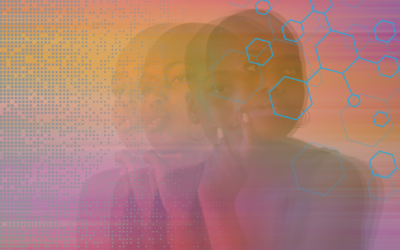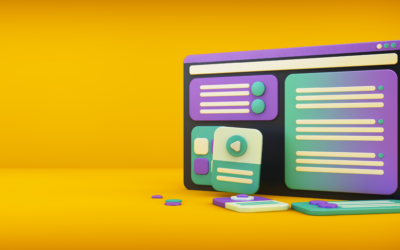The Logic of Empathy
Empathy isn't magic but it sure seems like it
29
Jul 2022
-
CAtegories
-
discover more
So my wife thinks I’m kinda psychic. I am not.
It dawned on me recently, her suspicions of paranormal abilities are rooted in the same reason a lot of otherwise brilliant digital products fail to connect with their audience: A misconception of empathy and an understanding of what it is…and what it is not.
A lot of people hear the word “empathy” and immediately think of snowflakes and touchy-feely, soft-headed hoodoo. I get it. But there’s actually something methodical and tangibly productive involved that shouldn’t be relegated to vacuous pseudoscience.
It may have been co-opted by self-help gurus, but empathy is really a fundamental and very powerful NEUROBIOLOGICAL process that played a starring role in the rise of human civilization and the prosperity of our species.
It’s practically a superpower.
DEFINING EMPATHY
To truly understand empathy, we first need to define it.
According to DR. HELEN RIESS, associate professor of psychiatry at Harvard Medical School and director of the Empathy and Relational Science Program at Massachusetts General Hospital in Boston, “Empathy is a complex capability enabling individuals to understand and feel the emotional states of others” and it is a “neurobiologically based competency.” (Check out the PROCEEDINGS OF THE NATIONAL ACADEMY OF SCIENCES RESEARCH if you want to see empathy activated in brain scans.)
Empathy is not the same as sympathy or pity, where you “feel sorry” for someone. It also isn’t the same as compassion, though it can help people behave more compassionately. All that is moving away from the hard basics.
Empathy is quite simply a skillset cultivated from innate information gathering and knowledge processing functions. It’s a form of intelligence.
Psychologists PAUL EKMAN and DAN GOLEMAN further CLASSIFY empathy into three hierarchical capacities:
- Cognitive — ability to recognize and register someone else’s perspective
- Emotional — ability to intuit and sense what someone else feels
- Applied — ability to act spontaneously in response to cognitive and emotional empathy
Empathy is often cited as the quality that enables stuff like parental love, cooperative effort, and even deft leadership. One explanation for why empathy helps drive so many facets essential to productive relationships and successful endeavor is based in evolutionary anthropology. Pioneering primatologist DR. SARAH B. HRDY identifies EMPATHY AS VITAL in distinguishing modern humans from our primate ancestors: “Our aptitude for imagining the emotions of other individuals is a powerful indicator of our humanity. Our ability to cooperate stems directly from that ability to empathize…[and leads] to a more sophisticated transfer of information.”
That sophisticated transfer of information can sometimes seem like magic.
EMPATHY IN ACTION
To illustrate, let me circle back to my wife. She loses things all the time. She’s not one of those creatures of habit who always hangs her jacket in the coat closet, or uses the same purse every day. She forgets where she puts things — mainly her car keys or her phone. And so, for 20 years, she regularly comes to me and asks questions like “Where are my keys?” — and I’m “magically” able to find them.
It took a long time to realize it, but the magic is actually empathy.
In response to her asking “Where are my keys?”, my mental process takes the shape of a series of questions forming a story. I’ll immediately think:
- When did she last have the keys? From available evidence, I can easily deduce that she had them when she came back from work last night, since she drove her car home and unlocked the door to enter the house. This is where the story begins.
- What kind of day did she have? What was on her mind as she walked in the door? I recall she was distracted because it had been a long day and her boss yelled at her and traffic was crap.
- How did she come through the door? I’ll picture her entering the house. She’d have a bag over her shoulder, her coffee mug in her right hand, and her keys would be in her left hand. She would have been angry, and she would have thrown them on, say, the couch by the door as she stormed in. They’d easily lodge behind that cushion bank…
Presto! There are the keys!
That’s a rudimentary scenario, but it conveys the gist of the process that takes place in my head. I can find the keys because I’m able to abstract myself and get into a different mindset: I mentally put myself in her position, envision and understand where she was and what she was going through, and use that to identify where the keys are most likely to be.
People might not necessarily think of that as empathy, but that’s really all it is.
EMPATHY IN DESIGN
On an organizational level, empathy applied in design similarly requires channeling a different perspective, shaped by a series of questions that build a story. Take, for example, designing a website:
- What led the audience to your site? What directed them there? Advertisements? Email links in a newsletter? An Instagram post? Google search results? What images or keywords drive traffic? This is where their stories begin.
- When do they come and how are they greeted? Try to understand what your audience might be thinking about and experiencing when they arrive. For example, what times do different audiences come to visit? Is traffic heavy on Monday mornings, indicating they’re at work? Does the site still load quickly under high-volume traffic? Are they met with unmuted autoplay video and sound? Do pop-ups block important navigation elements or images related to key information? Unlike you, they haven’t seen all the content a hundred times before. What might frustrate or distract them?
- How do they “come through the door”? Are they accessing your site on desktop computers or smartphones? Is the text too tiny to read on a tablet? Hamburger hidden on a touchscreen? Is the look and feel of the site consistent across devices/operating systems/browsers? Can they find what they’re looking for at first glance (navigation menu, relevant keywords, scannable text)? Is it easy for them to engage (prominent CTA and contact text/links/buttons, chat windows, enticing images)?
That’s also a rudimentary overview, but it illustrates empathy in action.
Empathy is enormously powerful in ensuring the ultimate success of a design.
EMPATHY IS A PROCESS
It may seem to come more naturally in some situations than others, but it’s still a process. And it’s a capacity that can be cultivated.
I’m good at empathizing with my wife and it manifests as a talent akin to “mind reading” to find her lost stuff, because we’ve been married a long time — and I’ve had lots of practice. But the underlying process can be scaled to fit needs beyond the cause of marital harmony.
In the cutthroat business world, it can be applied for ingenious product development and design. But it almost always requires crossing a hurdle to understand how somebody is able to think differently, or even feel differently, from your own perspective and (undoubtedly logical) inclinations.







